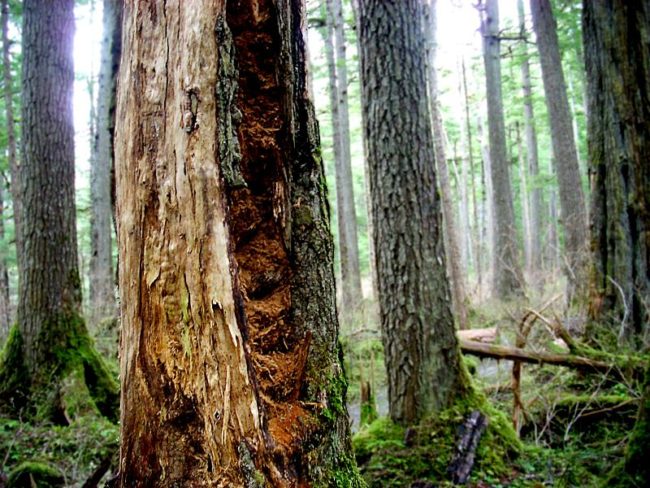
Officials on the Tongass National Forest are restricting logging activities because of the hot, dry weather and some lightning strikes in the region.
The forest has been placed on “Hoot Owl” restrictions, effective Friday May 22nd. That means some logging work cannot take place during the afternoon and evening. The limitations are in place for the Craig and Thorne Bay districts on Prince of Wales Island along with the Wrangell ranger district.
Ted Sandhofer, a timber sale contracting officer for the agency, says those are the only districts where logging companies are currently active.
“They can only haul, load and do some road construction work,” Sandhofer says. “They can’t fall or yard within that time period, and they also have to have some fire watch people during that high temperature zone between 12 (p.m.) and 8 (p.m.)”
Sandhofer says the restrictions will continue until the region sees some rain. It’s also possible all operations could be shut down if the hot, dry weather continues. Sandhofer says he hasn’t seen that kind of restriction during his career on the Tongass, but he did say the Hoot Owl notice is earlier this year.
The Tongass has had two confirmed fires on the forest from lightning strikes. Tristan Fluharty is the Forest Fire management officer for the Tongass.
The fire near Ketchikan is small, just a 10th of an acre. However it is unusual for lightning strike fires on the rainforest and especially for such a long, dry spell this early in the year.
“We’re kind of in unprecedented territory as far as the weather is concerned,” says Tristan Fluharty, Forest Fire management officer for the Tongass. “And the big thing is on the forest here the majority of fires are human-caused fires, and a lot of those human caused fires are abandoned camp fires. So we are really asking folks to take a little extra time and make sure their campfires are dead out before they leave them.”
The forecast for the region remains warm and dry.
